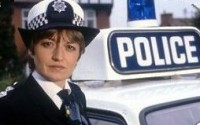‘The Gentle Touch, a Prime Suspect or the Killing?’ Representing women police officers in television drama
- Date
- 18 Mar 2014
- Start time
- 7:30 PM
- Venue
- Tempest Anderson Hall
- Speaker
- Prof. Frances Heidensohn

A lecture by Professor Frances Heidensohn, London School of Economics
Detective fiction is one of the best established and most popular forms of television drama. It has a long history: Fabian of the Yard was the first BBC series, airing in 1954, slightly before the iconic Dixon of Dock Green which ran for 21 years. Dixon was not only long running, it was highly regarded for its portrayal of community policing and praised by senior officers for its authenticity.
Female officers only appeared in marginal roles in such shows until 1981 when The Gentle Touch and Juliet Bravo appeared around the same time, both with fairly senior women officers in the leading parts. This development was reflected in the US where Cagney and Lacey was shown from 1981/2 onwards.
Nowadays, it seems as if we can hardly move for women cops on TV. Scandinavian noir heroines Sarah Lund and Saga Noren have attracted large followings, but we have many recent home grown versions such as Vera, WPC 56 and Scott and Bailey as well as the key positions being taken by female officers in New Tricks and The Commander.
Apart from providing excellent entertainment (Prime Suspect was rated as one of the best TV programmes ever), what is the significance of this phenomenon and how does it relate to the world of everyday policing? This is not just a reality check; media studies indicate that we take many of our ideas of crime and law enforcement from fiction so the depiction of images of policing may have wide impact.
This presentation will illustrate how the portrayal of female officers has changed over the past thirty plus years and how close this is to the careers of their real counterparts. It will mainly focus on British TV output, with some references to others. The comparisons are based on research studies as well as available data. It will also raise some questions about the rise of these programmes, propose some answers and offer types into which most output can be categorised, so that your future viewing can be properly analytical.
Report
The first (few) women were recruited into the police in 1910 in the USA and 1915 in the UK. Their traditional roles were dealing with women- and child-victims of crime: the policing of moral and sexual crime. Their representation in early television drama was marginal, but in the 1980s they began to appear in title roles and in positions of power. This did not reflect the reality women police officers have always been subject to sexism and are also marginalised, as are gays and other minorities. Some TV series, including the recent Scandinavian dramas, have addressed this, attempting to anticipate a more positive role for women. Others became more like soap operas using stereotypical situations and relationships for dramatic effect in the hope of generating income. However, while no TV dramas show the messiness of real police work, they do show the high price women pay when competing with men. But whether they inform or merely reflect public opinion about the police, policing, or women police is not quite clear. It may be significant that the Met now employs women to head a specialist operations unit, which includes counter-terrorism and security.
[Third in the series on Justice]
Carole Smith